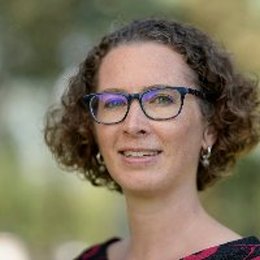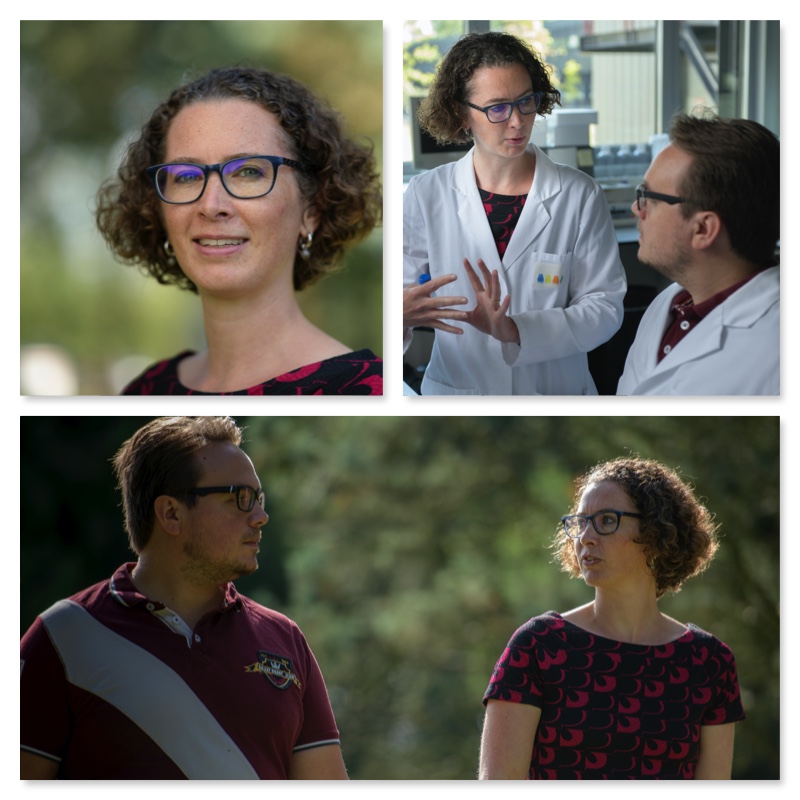new separation methods for chemical engineering
How life evolved from the primordial soup is still a mystery, but we have ideas about the molecules which were present in this soup. Saskia Lindhoud is an Assistant Professor at Molecular Nanofabrication, University of Twente. She investigates how molecules were brought together in the primordial soup. “In our view this could have happened because ribonucleic acid (RNA), which has a negative charge, can form structures with positively charged molecules. In these structures, small molecules can be captured and these small molecules can then react to larger molecules. This could have been a very important step in the origin of life. Similar concepts can be used to concentrate valuable molecules from waste water, with the aim to recycle them. That is what I like about my research, that I can apply knowledge from the primordial soup to discover new chemical processes.”
How did life start? That is one of the fundamental questions Lindhoud is investigating. “And although we have already done a lot of extensive research on these structures which could have formed in the primordial soup, it is still in its infancy. We can separate proteins using our methodology, but proteins are far too advanced molecules to be present in the primordial soup. We still need to do lots of research to fully understand how this process works. Unravelling these kinds of mechanisms is important because it can help to solve chemical technological issues we face as a society.”
Research and education
Lindhoud is believes in the added value of blended learning. “I use this method in my bachelor course on Chemical Science and Engineering. This is a mix of a limited amount of lectures and lots of online resources. There are short videos which are available online, so students can access and study them at any given time.” Lindhoud is aware of the disadvantages of this method. “The lack of physical interaction is the main thing students can miss. But if they do, students are free to contact me and my colleagues with their questions. Whether they do that is their own responsibility and I feel that is a good step. But besides that, we also use tutorials that complement the lectures and we offer them assignments in small groups so they can help each other as well.”
About Saskia Lindhoud
After completing a BSc and MSc on Molecular Sciences at Wageningen University in 2005, Lindhoud started a PhD project at the Laboratory of Physical Chemistry and Colloid Science under supervision of Prof. Martien Cohen Stuart and Prof. Willem Norde. The topic of her PhD work was the incorporation of enzymes in polyelectrolyte complex micelles. Within four years (2009) she defended her thesis entitled “Polyelectrolyte Complex Micelles as Wrapping for Enzymes.” After graduating, she left the Netherlands to investigate whether shower-gel can be made “greener” using oxidized cellulose as viscosity modifier. This research was performed at the University of Bath (UK). During this two year project, Lindhoud performed many neutron and x-ray scattering experiments at large scale facilities (ISIS, DIAMOND, ESRF and ILL) trying to resolve the structure of these oxidized cellulose gels.
At the beginning of 2013, she joined the Nanobiophysics group at the University of Twente to work on a project called: “Motor failure in neurodegenerative diseases.” Later that year, Lindhoud was awarded the prestigious Veni award on “Complex Coacervates as Molecular Crowding Agents,” to start her own research line. In June 2016 she became an Assistant Professor at the Nanobiophysics group and focuses her research on "Complex coacervate droplets: from life to death and how to turn it into technology?" In April 2020 she continued her research at Molecular Nanofabrication. She is the winner of the “Dave Blank Outreach Award 2019”and “Teacher of the Year Award Chemical Science and Engineering 2020.”
Press Photos
Click on thumbnails to open the picture folder. These press photos can be used without copyright restrictions.


